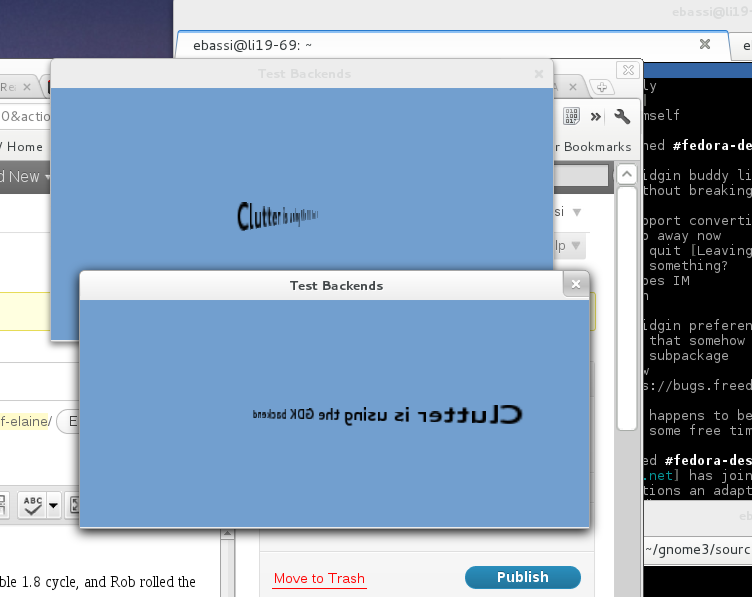oh man, it’s getting harder to find blog post titles…
clutter 1.8 — last Friday I rolled the first release of the new stable 1.8 cycle, and Rob rolled the first stable release of the now standalone Cogl. it’s been six months of intense development, with lots of contributions, and I’d like to thank everyone who submitted patches, opened bugs, added a translation, or even dropped by in the #clutter IRC channel to tell us that they were using Clutter for their awesome project.
clutter 1.9 — instead of resting after pushing 1.8 out of the door, we’re already hard at work on what will become 1.10 in six months. while Cogl is getting more and more refactoring to make the code base more understandable and reliable, as well as preparing the way for new features, Clutter is also getting some refactoring. today, for instance, I worked on building Clutter with multiple backends in the same shared object. one of my first major contributions to Clutter, back in the OpenedHand days, was to provide the ability to have multiple backends — and it worked pretty well: after the GLX backend we got a Windows backend, then a framebuffer backend, then an OS X backend. during the years, the implementation was amended here and there to avoid leaking the backend implementation all over the place, and we always resisted the temptation (and the outside pressure) to provide a full abstraction library for the windowing system akin to GDK. this allowed us to maintain the backend code lean and lightweight, to the point that it took me literally an hour this morning to go from the current HEAD of master to a test running with either GDK or GLX (depending on an environment variable) — and most of my changes were in the build system, not in the code.
as an example, this is a simple test program that checks the backend support at both compile and run time; using Clutter from the multi-backend branch, compiled with --enable-x11 and --enable-gdk, you can run the example on X11 using:
$ CLUTTER_BACKEND=x11 ./test-backend & $ CLUTTER_BACKEND=gdk ./test-backend &

and have two instances, one using the native X11 backend and the other using the GDK backend.
there’s still some work to do, namely fixing Clutter-GTK to work with a multi-backend Clutter, and making it use the GDK backend by default, if found. there’s also the issue of being able to use the GLX_EXT_texture_from_pixmap extension under the GDK backend on X11, if available, so that we can efficiently embed GTK widgets rendered off-screen like we can already do when using the Clutter X11 backend.
all in all, this work will help towards the goal of using Clutter and GTK together in a more organic fashion, and with fewer blocks and hacks in the middle.

